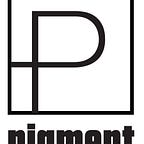The evolution of art fairs and why BUTTER 2 is what we need in a post pandemic world
by P. Andrews-Keenan
Consider the evolution of the art fair. It can be traced back to antiquity as part of gatherings and pilgrimages during the Roman and Greek empire. You can envision something like the “naming day” ceremony in this week’s episode of HBO’s House of Dragons. There had to be art tributes to the little Aegon, don’t you think?
Prior to 2019 there were over 300 art fairs reports Artland Magazine and of course there is no breakdown on Black run art fairs. But we know of a few. Culture — The Black Fine Art Expo coming up in Columbus, OH is in its second year and runs from September 30 — October 2; Miami-based PRIZM Art Fair, has gained a stellar reputation for the international works it exhibits and will be back in person this December; and the long standing Harlem Art Fair, has traveled the country for more than a decade. The global 1–54 Art Showreturned to Harlem this spring and will be showing in London and Morocco.
The art ecosystem retreated online during the pandemic, and while there was a shift in how art is bought and sold — advantage point Instagram — there was also a yearning, if you will, for the in person experience. An even larger part of that is the platform that art fairs offer for business, trade, networking and just plain fun. But what should an art fair look like in a post pandemic world.
Ganggang Culture’s Butter is not the only Black run contemporary art fair to launch post pandemic, but in addition to leaving the pandemic behind it left behind the norms, the rules and even the reasons why. The white walls, no or low music and no distraction ethos wasn’t what Butter subscribed to when it debuted in 2021, and they strayed even further from the rules with BUTTER 2. And yes we’ve seen shows in old churches (1–54) and old warehouses, but BUTTER 2 took it further, taking up three times more space in the historic Stutz building this year.
The immersive art fair did away with booths and opted for Black walls, another trend seen in Venice with the Afrofuturist Manifesto: Blackness Reimagined, curated by Galerie Myrtis for the European Cultural Centre (ECC).
Even without traditional booths each BUTTER 2 artist had their singular space, but it harmonized perfectly with the adjoining work. It was “in conversation,” a term I learned from Rhonda Sewall at the Toledo Art Museum. The remixing of the art each day was done so subtly so you had to question if you’d seen the new piece the day before. Bravo to the curation team of Ganggang Culture’s co-founders Mali Simone Jeffersand Alan Bacon and their team of Braydee Euliss and Sarah Urist Green.
BUTTER is also disruptive in its mission to “build equity and cultural reparations for Black artists into a high-profile event that boosts the city’s creative economy.”
And it comes across as DE&I done right. Its tagline is “An Art Fair for Equity”, but it is disruptive without missing the point. And the point is always to sell art.
More than 50 artists participated in this year’s fair. Indianapolis artists still hold sway at BUTTER, with 75% hailing from Naptown. For instance, works by local artist Johnson Simon, an artist, mentor, and disability activist, and himself disabled, were a standout at BUTTER 2. But there were subtle introductions of Midwest and national artists including April Bey (LA), Theda Sandiford (Jersey City, NJ) with her emotional baggage carts; and Chicago artist EDO, presented by Pigment International™.
BUTTER’s partnership with Long-Sharp Gallery included showcasing the work of Nigerian-born artist Móyòsóré Martins, whose exhibit Móyòsóré Martins: Seen opened that week. Pigment Internationalhosted conversations with EDO and Indianapolis artist and ceramicist Gary Gee.
All this gave the show an air of sophistication I’m sure will be ratcheted up in the future. And the yellow dots (no red dots here) were once again plentiful. Look forward to hearing the final numbers. Ganggang reported selling 42 pieces of art totaling $65,000 in 2021.
Dynasties rise and they fall, but art shows evolve, Ganggang Culture is doing that nicely.
